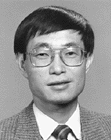 |
50 (11) (1998), p. 66. |
|---|
 |
50 (11) (1998), p. 66. |
|---|
 |
With regard to fabrication and utilization, NDE plays an important role in the processing of composites by providing cost-effective interactive process control for these difficult-to-manufacture materials. The detection of potential defects early in the processing cycle enhances overall system yield and material quality. Life prediction, meanwhile, is a subject of growing interest as industrial facilities age and structural components operate for long periods at high temperatures. A reasonable plant-life-extension strategy includes methods for characterizing the condition of in-service materials, accurate determination of the time- and service-dependent properties of materials, and quantitative life-prediction technology.
Because of the limited availability of test materials from in-service structural components, NDE offers an attractive means of obtaining material property information. NDE methodsincluding eddy current, magnetic property measurements, surface replication, ultrasonics, and x-rays have proven effective in assessing such properties. For example, NDE techniques can be employed to investigate plant components and uncover critical areas that contain severely degraded materials. Test or miniature specimens can be machined from these areas for additional testing.
To effectively employ NDE tools, it is important to understand how various NDE signatures relate to material properties. To expand our awareness of work in this area, this month's JOM-e comprises four papers related to the application of NDE methods to the characterization of material properties. You can find the papers by visiting http://www.tms.org/pubs/journals/JOM/9811/contents-9811.html. For more detail, see page two of this issue for complete abstracts and web addresses. These on-line papers, which have been enhanced with the use of color artwork and hyperlinks, can be viewed at no charge by any visitor to the JOM World Wide Web site, where they are permanently archived.
First, Z.M. Connor, M.E. Fine, J.D. Achenbach, and M.E. Seniw describe opportunities for utilizing nondestructive scanning acoustic microscopy (SAM) to investigate subsurface integrity in materials, including fatigue crack initiation and propagation behavior from hidden surfaces. Demonstrating the capabilities of this approach, the authors discuss a study of crack initiation and growth characteristics beneath outer surfaces near rivets; the analysis found subsurface pores in castings. SAM technology can be very effective in assessing the structural integrity of aging aircraft components.
Next, M. Huang, L. Jiang, P.K. Liaw, C.R. Brooks, R. Seeley, and D.L. Klarstrom review the application of acoustic emission (AE) analysis to fatigue and fracture research. In addition to outlining this research, the article provides detailed background on the AE technique and considers its future. The authors also comment on the technique's shortcomings, including noise reduction and reliability as well as difficulties in solving the inverse conditions of wave propagation in source function and waveform analyses.
In the third paper, Kim and Liaw discuss frequently used NDE methods for advanced ceramics and ceramic-matrix composites. These include ultrasonics, computed tomography (CT), x-ray radiography, and AE. In principle, CT and x-ray radiography utilize the same energy sourcesradiationhence, there are safety concerns. Still, although it is expensive, CT provides a cross-sectional view of the entire material. The ultrasonics approach is based on sonic transmission caused by defects in the material, and it is suitable for examining relatively thick materials in a relatively short time. Capable of continuous surveillance during testing, AE represents a passive NDE technique as it is based on the emission of a stress wave from inside the tested material; the main drawback of AE is that it requires a prehistory of stresses for defect detection.
In the final paper, Gouma, Akbar, and Mills describe microstructural characterization by sensors based on electronic ceramic materials. Several sensors have been developed for different applications, including thermally resistive sensors, gas sensors, and biosensors. Thermally resistive sensors include high-temperature thermistors based on rare-earth oxides and high-temperature sensors using insulating and packaging materials. Gas sensors encompass oxygen sensors; elevated-temperature, selective-CO sensors; TiO2-based thick films; TiO2 thin films; and NOx sensors. Recent advances in the field of electron microscopy have introduced two methods that are applicable to the sensor research. They are orientation imaging microscopywhich is based on the electron backscattered diffraction pattern acquisition process in a scanning electron microscopeand field-emission-gun-based, high-resolution transmission microscopy.
As the papers of this month's JOM-e indicate, NDE techniques are widely used in characterizing material properties. Still, more such applications should arise in the future with the evolution of advanced materials processing and the desire for increasing accurate life-prediction technologies. In particular, the application of NDE during manufacturing can provide a closed-loop, feedback-based approach for controlling the production of advanced materials. This kind of intelligent-processing capability should be developed further to assure the high-quality fabrication of advanced materials, reduce manufacturing costs, and therefore, guarantee successful materials production. With rapid prog-ress in NDE signal- and computer-processing capabilities, the characterization of material properties via NDE will only grow, as will the effective utilization of traditional and advanced materials.
Direct questions about this or any other JOM page to jom@tms.org.
| Search | TMS Document Center | Subscriptions | Other Hypertext Articles | JOM | TMS OnLine |
|---|